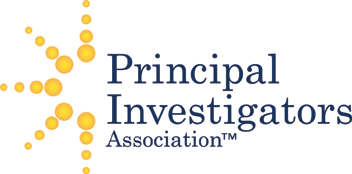No. 126: How to Craft a Winning Title for Your Research Proposal
The title of your grant proposal to the National Institutes of Health (NIH) and the National Science Foundation (NSF) is your first chance to win over peer reviewers with an innovative, creative idea that they’ll want to champion for funding.
A title that stands out from others and virtually compels reviewers to read your application adds one more advantage to your chances of achieving a high score (if the substance of your proposal is top-notch).
This significant piece of information must be a unique, relevant and intriguing description of your research plan — all packed into about 80 to 100 characters (depending on the agency). In this limited space, you must strive to convey:
- What you will do
- How you will do it
- And, most importantly, what the results will be.
Public agencies and private foundations want to fund work that can seriously impact society or advance science.
“Point to the outcome of the research in your title,” advises Lisa Chasan-Taber, associate professor of epidemiology at the University of Massachusetts/Amherst.
“It should inform the reviewer of the essence of the project,” says Dr. Mario Inchiosa, professor of pharmacology at New York Medical College at Valhalla.
Tips for creating successful titles for NIH and NSF grant applications include:
- Be original and relevant. How? Make sure yours differs totally from those of already submitted applications or from funded research. Agencies want fresh, innovative projects. Review databases of existing applications and awards at www.projectreporter.nih.gov and www.nsf.gov/awardsearch and contact the appropriate NIH scientific review officer or NSF program officer to ensure that your title is not redundant or closely similar to another.
. - Be accurate and use agency-friendly keywords that help officials direct your proposal to the appropriate study section. “It’s important to have terms in the title that will make it clear which study section should see it,” says Chasan-Taber. “For instance, using the term ‘epidemiology of’ will help the application go to an epidemiology study section.”
. - Find out which themes are mission-relevant, in priority areas for research, or are emerging as future priorities. For the NSF, these include ecosystem impacts of the Deepwater Horizon oil spill in the Gulf of Mexico, decontaminating dangerous drywall, robotics, energy alternatives, climate change and its impacts, nanotechnology, improving science, math and engineering education and commercialization of biosciences. Go to www.nsf.gov/funding for more information. NIH themes getting attention include cancer, HIV/AIDS, pediatric and adult obesity, and aging-related topics. Information is available at http://grants.nih.gov/grants/oer.htm.
. - Use results-driven words instead of those that describe your process. Here are some examples (find more at www.projectreporter.nih.gov):
- Testing Direct Effects of Reproduction on Stress and Mortality Via Ovariectomy
- Is Tolerance an Enabling Factor for Greater Alcohol Consumption?
- Neonatal Neurobehavioral Impacts of Iodine Insufficiency and Pesticide Exposures
.
- Be authoritative. That means let reviewers know that you know what you’re talking about. For instance, if you’re a researcher focusing on behavioral science, obesity and nutrition in specific population segments, your grant title could be: Culturally Appropriate Childhood Obesity Prevention Programs for Hispanic Families (An actual successful NIH grant proposal title).
. - Keep agency criteria in mind. NIH criteria are: significance, innovation, investigators, approach, and environment. NSF criteria are: intellectual merit and broader impact.
. - Use plain language. Notice the simplicity, directness, and economy of words in this successful title: Public Health Preparedness and Response for Bioterrorism. A wordy, awkward, dramatic way of saying the same thing would be: Will Public Health Authorities Be Ready When and If the Horrors of Bioterrorism Unfold in Their Cities?
. - Follow the rules. NIH limits title length to 81 characters, including spaces and punctuation. If longer, your title will be cut arbitrarily, stripping away meaning and impact. An agency may request a specific reference as part of a title when issuing a solicitation. For example, the NSF may specify that a title begin with NSCC/SA, which stands for National Security Conflict and Cooperation/Small Award. Agencies may also require specific fonts and type sizes.
. - Use active, forward-thinking verbs, such as predicting, mobilizing or empowering, that tell readers your project points to results, such as Enabling TV Meteorologists to Provide Viewers with Climate Change, Relevant Science Education and Predicting Placebo Models Across Disease States, and Empowering U.S. Universities for Discoveries at the Energy Frontier.
. - View your title as a work in progress. Your final one may differ from your initial one because a proposal’s specifics typically change during the writing process. Write a provisional title that you’ll finalize when you’ve completed the application.
. - Get input from peer scientists and individuals outside your field, preferably an English professor or an editor for proofreading and language use. Colleagues with grant-writing experience can be especially helpful.
. - If you’re resubmitting, keep your proposal’s original title so it’s recognizable to agency officials.
. - Finally, proofread your title before hitting the “send” button. Don’t rely on your spell-check program. Use a dictionary. Terminology must be spelled correctly. An insignificant error could wreck your chances of winning funding.
To receive educational articles like this one, sign-up today to PIA’s free bi-monthly eNewsletter “Science Pro Insider”!
Science Pro Insider is the only eNewsletter that focuses 100% on the managerial aspects of your lab operations and your science career. It shows you how to easily manage your lab better and faster, and provides easy-to-apply expert tips, shortcuts and best practices so you can focus on the research you’re doing right now. Subscribe today!
Comments (0) | Read More...




